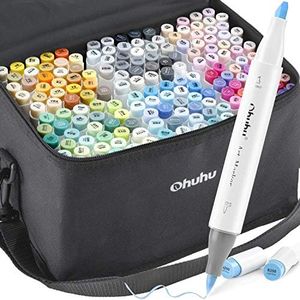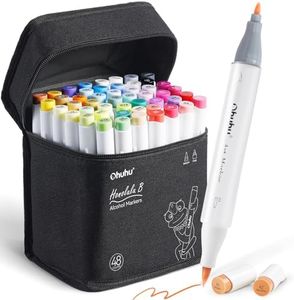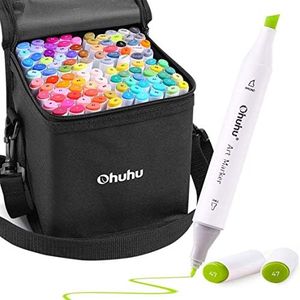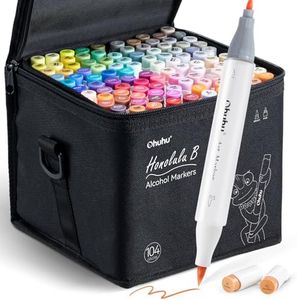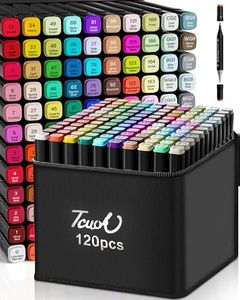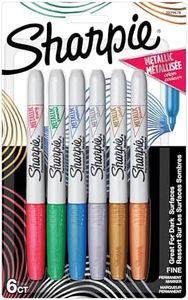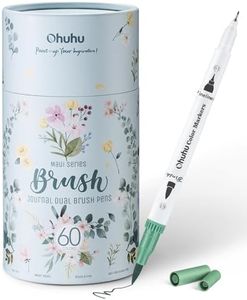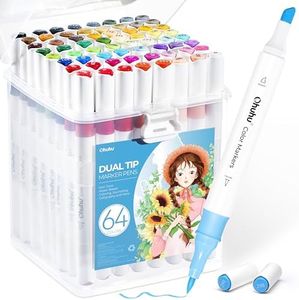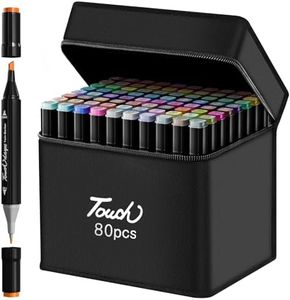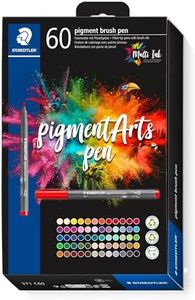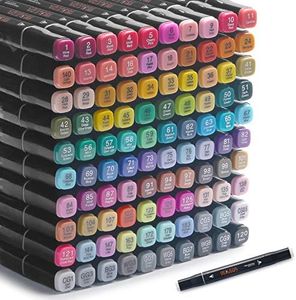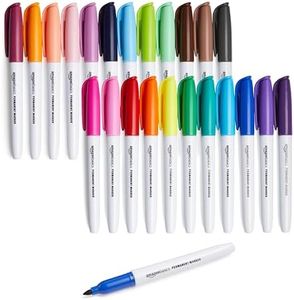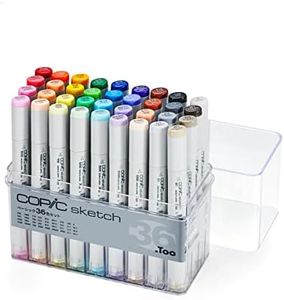We Use CookiesWe use cookies to enhance the security, performance,
functionality and for analytical and promotional activities. By continuing to browse this site you
are agreeing to our privacy policy
10 Best Color Markers
From leading brands and best sellers available on the web.Buying Guide for the Best Color Markers
Choosing the right set of color markers can really improve your drawing, coloring, or labeling projects. The perfect markers for you will depend on what you plan to use them for—such as coloring books, artwork, note-taking, or crafts. To choose wisely, it's good to understand the types of markers available and what makes them special for different uses. Focusing on a few key attributes can help you narrow down your options so you get markers that work best for your style and purpose.Ink TypeInk type refers to the formula of the coloring substance inside the marker and influences how the marker performs. The main categories are water-based and alcohol-based inks. Water-based inks are safe, don’t smell strong, and are good for kids or casual use, but may not give super vibrant colors or be very blendable. Alcohol-based inks produce bright, smooth colors and blend well, which artists often prefer, but they do have a stronger odor and can bleed through paper. To choose, consider whether you'll be using them for detailed art, basic coloring, or somewhere in between. If you want vibrant, professional effects, alcohol-based might be best; for kids or general crafts, water-based markers are a safer bet.
Tip Shape and SizeThe tip, or nib, of a marker determines the thickness and style of the lines it creates. Fine tips are great for precise lines and writing, broad tips fill in larger areas quickly, and brush tips mimic the feel of a paintbrush for blending and varied strokes. When picking markers, think about your main activities: detailed drawing and outlining suit fine or ultra-fine tips, coloring big spaces is easier with broad or chisel tips, and brush tips are excellent for hand lettering and artistic blending. Some sets offer dual tips for flexibility.
Color RangeColor range means how many different shades and hues the marker set includes. Smaller sets with basic colors are enough for journaling or simple crafts, while larger sets, offering dozens or even hundreds of shades, are better for professional art or detailed coloring where subtle differences matter. When choosing, consider how many colors you realistically need for your projects – more isn’t always better if you’ll only use a handful, but a broader range allows more creative flexibility.
BlendabilityBlendability is the ability of marker colors to mix smoothly together on the page, creating gradients or new shades. Alcohol-based markers usually blend better than water-based ones. For artists who want to shade, highlight, or create smooth transitions, good blendability is important. If you just want to block in color or write, blendability matters less. Think about whether your projects require blending and choose accordingly.
LightfastnessLightfastness is a marker’s resistance to fading or discoloration when exposed to light over time. If you want your artwork or craft projects to last and keep their vibrancy, look for markers described as 'lightfast' or 'fade-resistant.' For creations meant to last, like framed art, lightfastness is important; for temporary work or everyday use, you can worry less about this factor.
WashabilityWashability describes how easily marker ink comes off skin, clothes, or surfaces with soap and water. Washable markers are ideal if young kids will use them or if accidental marking is a concern. Non-washable markers generally offer longer-lasting, more vivid colors. Your decision should depend on whether easy cleanup is a priority for your uses.
